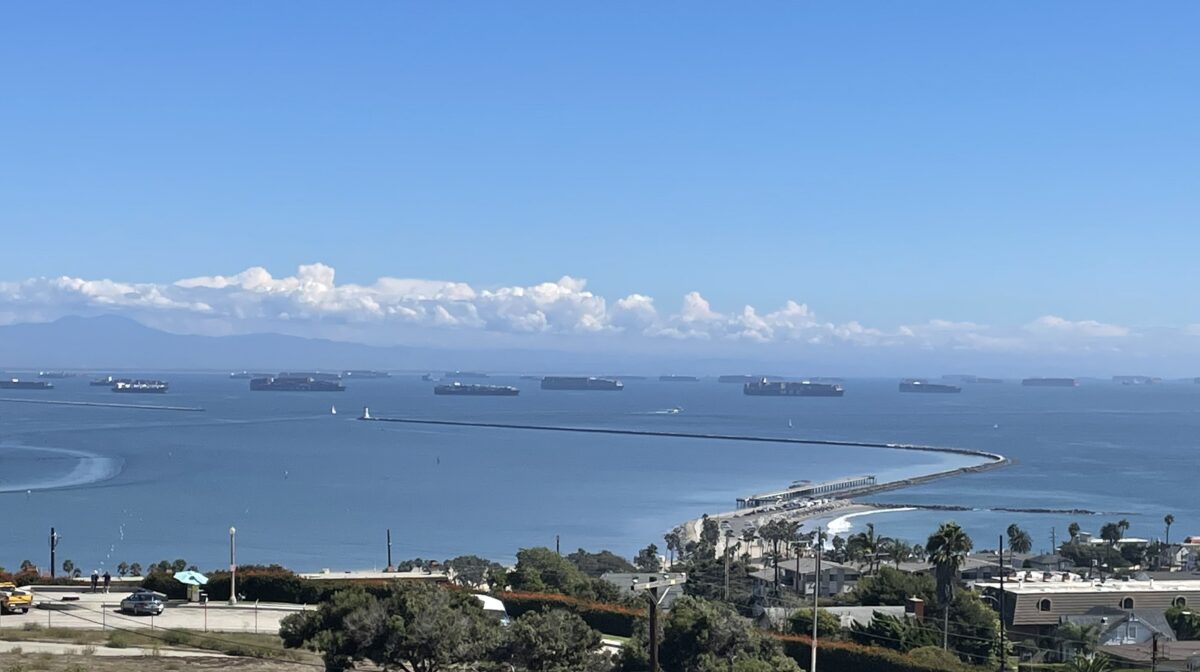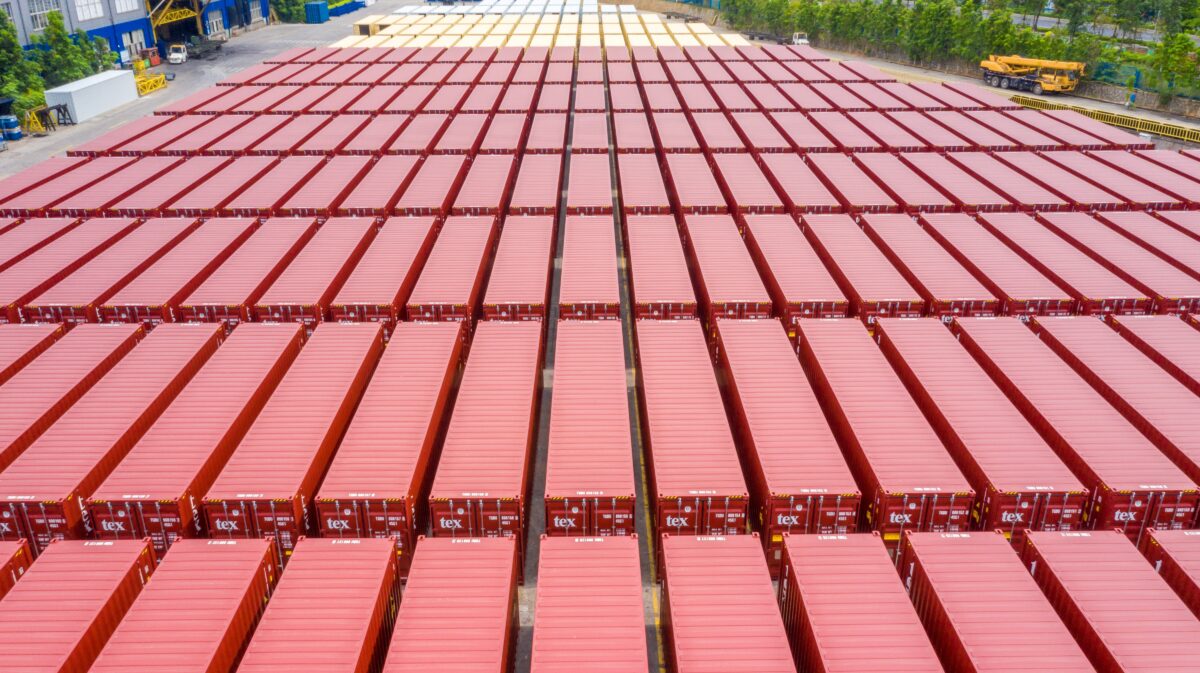This has been the year of the shipping queue — of container vessels stuck waiting in line, waylaid for weeks at the Suez Canal or off Los Angeles/Long Beach, Savannah or Shanghai.
For the second year in a row, COVID has played an outsized role: revving up import demand in the U.S., stymieing port operations in Asia, and fueling an unprecedented rate boom for liner operators and container-ship owners.
The following is a look back at American Shipper’s coverage of container shipping in 2021, one of the most important years in the sector’s history:
Ever Given stuck in Suez
The Ever Given got stuck sideways in the Suez Canal on March 23, blocking traffic in both directions for six days. Over 350 ships were waiting at anchor at the peak (story here).
The world was transfixed.
The Ever Given became a social-media meme (story here) amid a surreal wave of tweets and TikTok videos. Beleaguered shippers faced weeks of delays for shipments to Europe and the East Coast (story here).
LA/LB logjam
The Ever Given accident turned out to be a sideshow compared to this year’s main event: U.S. supply chain congestion. Import volumes reached a record high for 2021 overall (story here), and backups have been widespread, from the country’s ports to its inland transport. Los Angeles/Long Beach, which handles 40% of U.S. imports, has been the epicenter.
The queue of ships waiting at anchor off Southern California topped 30 in January (story here) and peaked at 40 on Feb. 1. The previous record for ships at anchor off Los Angeles/Long Beach, which occurred during labor unrest in 2014-2015, was surpassed by April (story here).

The queue dropped to a low of just nine container ships in late June, spurring hope that congestion would be overcome. That hope was quickly dashed as peak season ramped up. The queue numbers started rising again. The Feb. 1 record was surpassed by late August (story here).
By late October, 80 container ships were waiting, more than twice Q1 levels (story here). By early December, there were 96 (story here) and by mid-December, 102. As of Saturday, there were still 97 box vessels waiting at sea.
Fallout from the Ever Given incident lasted weeks. The situation in LA/LB has now lasted a year — with no end in sight.
Stratospheric container rates
The high demand that caused port congestion also caused freight rates to escalate (story here). And as freight rates rose, so too did demand for chartered ships, which pushed charter rates to record highs as well.
According to shipping consultancy Drewry, Asia-West Coast spot rates (excluding premiums) more than tripled from $4,000 per forty-foot equivalent unit at the beginning of this year to over $12,000 per FEU in mid-September.
Rates pulled back thereafter, but not by much; they stabilized and are now inching back up yet again (story here).

Charter rates also rose through most of the year; short-term rates peaked at an astronomical $200,000 per day in September (story here). As with spot rates, charter rates pulled back from the peak but are now on the rise once more (story here).
The surge in freight rates has driven unprecedented profits for container lines, from behemoths like Maersk (story here) to niche lines like Zim (NYSE: ZIM; story here).
Drewry predicted in July that liner shipping would earn $100 billion overall this year. In October, Drewry upped its forecast to $150 billion for this year and another $150 billion for 2022 (story here). This month, Drewry hiked its forecast yet again, to $190 billion for 2021.
Liners are using massive windfall profits to pay down debt, return capital to shareholders and grow their companies. Several carriers are expanding into logistics, tech and air cargo (story here).
Government intervention
Worsening port congestion led to concerns over shortages and stockouts that would affect American consumers (story here). Skyrocketing freight rates spurred concerns over inflation (story here). Consequently, the supply chain crunch attained higher political stature, prompting attention from both Congress and the Biden administration.
The House introduced the Ocean Shipping Reform Act in August and passed the bill this month (story here). The Senate is now preparing a companion bill.
If enacted into law in 2022, this legislation would shift the burden of proof on the fairness of detention and demurrage charges to carriers and make it more difficult for carriers to refuse U.S. exports. Lars Jensen, head of consultancy Vespucci Maritime, warned, “Be careful what you wish for,” arguing that such a law could have serious unintended consequences (story here).
Meanwhile, the ports of Los Angeles and Long Beach, with the backing of the Biden administration, have threatened to levy a highly controversial fee on long-dwelling import containers (stories here and here).
That fee was announced on Oct. 24, but implementation has been delayed ever since, with port officials citing progress. It was delayed for the seventh time on Monday. While the number of long-dwelling containers has declined significantly since the plan was first announced, progress has stalled more recently (story here).
China, Asia, COVID
Beyond the Ever Given, this year’s major developments for container shipping stemmed from COVID: from changes in buying patterns, government stimulus or supply chain fallout from pandemic precautions.
In addition to the import effects (U.S. port congestion and record-high freight rates), there have been huge effects on the export side in Asia.
China emerged as one of the biggest winners of the COVID era, as demand for its exports soared (story here). China has also reaped the benefits of its near-total dominance of container-equipment manufacturing — just three Chinese companies build eight of every 10 new containers (story here).

A key risk for the U.S. given its high dependence on imports: COVID outbreaks in China and other Asian nations such as Vietnam can have major consequences across the Pacific.
Disruptions this year included the closure of the port of Yantian, China, in June (story here); an outbreak closing factories in Vietnam in July (story here); and the partial closure of the port of Ningbo, China, in August (story here). In September, Chinese factories suffered outages due to power shortages (story here), and a container-ship queue off Shanghai and Ningbo grew larger than the one off Los Angeles/Long Beach (story here).
Unlike the U.S., China has a “zero COVID” policy, meaning it shuts down entire cities and ports after a very small number of cases. Given the high infection rate of the omicron variant, China’s policy could lead to more port closures in 2022, mirroring what happened in Yantian earlier this year. Omicron could also extend the consumer buying patterns seen in the first two years of the pandemic, keeping freight rates high (story here).
As with 2021, the top shipping stories of 2022 could be mostly tied to COVID.
Industry expert Lars Jensen on the year in container shipping:
Click for more articles by Greg Miller
Related articles:
- By the numbers: Shipping’s unparalleled year in 10 charts
- COVID-era shipping stocks: The (super) good, the bad and the ugly
- About that rate relief … ocean shipping costs are rising again
- Los Angeles import volume sinks as shipping traffic jam worsens
- It’s official: 96 container ships are waiting to dock at SoCal ports
- Container shipping’s stranger-than-fiction first half of 2021







